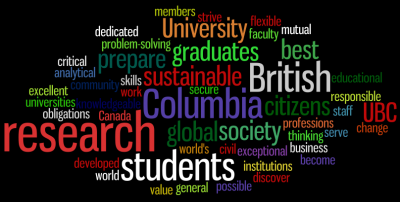Major transitions are often a time of reflection and change for me, and coming back from travelling is usually a time where I set goals and make changes as “real life” resumes.
One of my goals is to cut down on my online life. Here’s what I’m doing.
BLOG READING
Cutting down the blogs I keep up on to:
General News
I don’t have a TV and only listen to CBC radio, so RSS news feeds are my main source. I subscribe to feeds from Vancouver Sun, CBC, Globe and Mail, and NY Times. I also get emails from the Economist and Financial Times.
Thought leaders
This doesn’t mean leaders in the “I have a bajillion followers” sense. But instead, people that write about things that I would love to discuss with them in person – usually related to community and/or education. Some of my current favourites:
- Glenn’s little ugly blog by Glenn Gaetz, who I’ve come to know in person through SFU’s Certificate in Dialogue and Civic Engagement
- Know Your Own Bone by Colleen Dilenschneider, who I’ve only met online through the Nonprofit Millennials Blogging Alliance
- Peter Levine (Director of CIRCLE), who writes largely on civic engagement, but I read him through Facebook, as this is where the comments happen on his writing (friend him, he doesn’t have a fan page).
Deep Sector News
Websites that offer important policy and research news regarding topics like civic engagement or the nonprofit sector in Canada. Some of my sources:
- CIRCLE, which produces research on youth and civic engagement
- Imagine Canada, which produces research and policy recommendations related to the charitable sector in Canada
Hard Resources
No, I don’t want to know your “Top 3 Ways For Nonprofits to Use Twitter” or “10 ways to enhance your personal brand”. However, if you have recommendations for tried, tested and true technology tools or professional development, I’d like to hear. Some examples include:
- Civic Footprint, which writes a lot about their innovative Timeraiser events and civic engagement, but is also a huge proponent of cloud computing and efficiency and productivity through technology
- Wild Apricot Blog, which writes about volunteerism and associations in general, but also a lot about web technologies
Sigh. I’m not sure exactly what I’m going to do about this. I’ve met great people through Twitter, and have been directed to great information. But most of it is shit, and results in a lot of switching costs (time wasted by changing objects of focus too often). Even limiting people I follow to those interested in similar topics leads to a lot of shit. And I’m guilty of producing it too.
I’m kind of a “let’s get down to the good stuff” kind of gal, and I don’t think Twitter is what I’m looking for when it comes to conversing and learning. I’ll probably stick around, but in a much more limited way. I learn more meaningful things about people and their ideas through their blogs.
Sigh to the power of infinity. It’s a personal not a professional tool for the most part, and as so many friends are on it, I think giving it up is impossible. But maybe only check it once a day? Maybe? OK. Twice. Fine, three times.
Delegate. Do. Delete. or Designate = Done. I like a zero inbox at work and at home. I’ll continue this.
TV
I don’t have a TV, but I still watch a lot online. This season I’m trying to stick to Mad Men and How I Met Your Mother.
What about you? Have you tried to minimize your time online?

